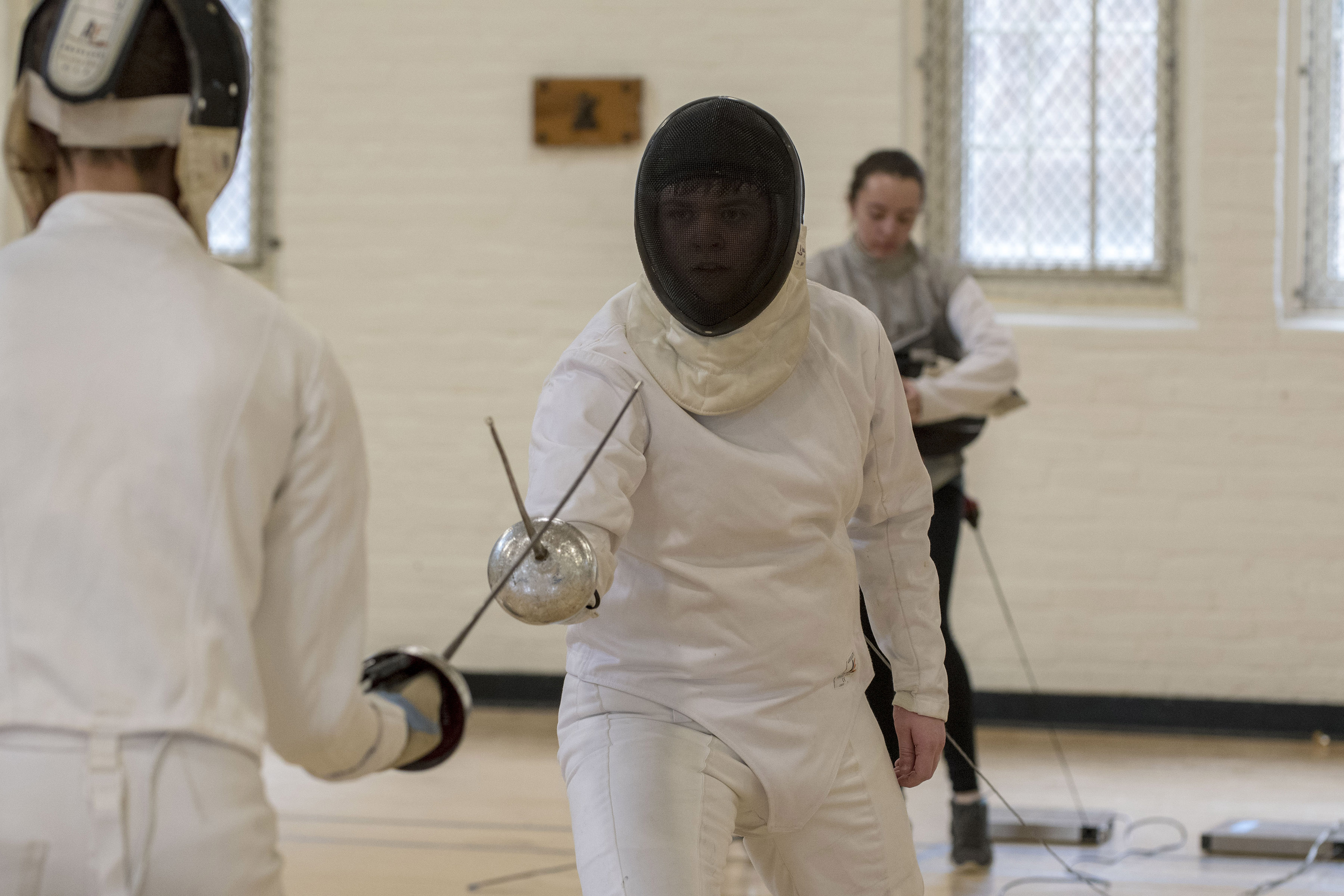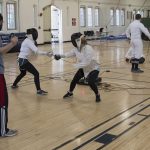
The UConn Fencing Club practices at the Willis Nichols Hawley Armory on March 4. The club is open to both men and women, in any major. (Garrett Spahn '18 (CLAS)/UConn Photo)
Alpay
The UConn Fencing Club practices at the Willis Nichols Hawley Armory on March 4. The club is open to both men and women, in any major. (Garrett Spahn '18 (CLAS)/UConn Photo)

Jonathan Ferris, coach of the UConn Fencing Club, directs practice. Practices are held two to three times a week, to prepare for a tournament each semester. The UConn club also competes in meets with other fencing clubs in the area. (Garrett Spahn '18 (CLAS)/UConn Photo)
Alpay
Jonathan Ferris, coach of the UConn Fencing Club, directs practice. Practices are held two to three times a week, to prepare for a tournament each semester. The UConn club also competes in meets with other fencing clubs in the area. (Garrett Spahn '18 (CLAS)/UConn Photo)

Michelle Martinez '21 (CAHNR), an animal science major, prepares for practice on March 4. The first hour of practice is spent working on fundamentals, like footwork and blade work, while the last hour is pure fencing. (Garrett Spahn '18 (CLAS)/UConn Photo)
Alpay
Michelle Martinez '21 (CAHNR), an animal science major, prepares for practice on March 4. The first hour of practice is spent working on fundamentals, like footwork and blade work, while the last hour is pure fencing. (Garrett Spahn '18 (CLAS)/UConn Photo)
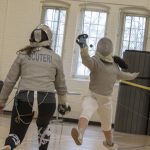
Freshman Michelle Martinez '21 (CAHNR), right, practices a move with senior Joanna Scuteri '18 (CLAS), a geoscience major. All fencers require a jacket, a mask, a glove, trousers or knickers, white stockings, flat-soled shoes, a body cord, and a weapon. (Garrett Spahn '18 (CLAS)/UConn Photo)
Alpay
Freshman Michelle Martinez '21 (CAHNR), right, practices a move with senior Joanna Scuteri '18 (CLAS), a geoscience major. All fencers require a jacket, a mask, a glove, trousers or knickers, white stockings, flat-soled shoes, a body cord, and a weapon. (Garrett Spahn '18 (CLAS)/UConn Photo)

Adam Boislard '19 (ENG), a junior majoring in mechanical engineering, participates in a warm-up drill focusing on footwork. (Garrett Spahn '18 (CLAS)/UConn Photo)
Alpay
Adam Boislard '19 (ENG), a junior majoring in mechanical engineering, participates in a warm-up drill focusing on footwork. (Garrett Spahn '18 (CLAS)/UConn Photo)

Glenn Thierfeldt '20 (ENG), a sophomore majoring in electrical engineering, checks out the point of his weapon during fencing practice on March 4. The blade has a pressure-sensitive button at its tip, and fencers wear clothing that is sensitive to the electrical weapon. (Garrett Spahn '18 (CLAS)/UConn Photo)
Alpay
Glenn Thierfeldt '20 (ENG), a sophomore majoring in electrical engineering, checks out the point of his weapon during fencing practice on March 4. The blade has a pressure-sensitive button at its tip, and fencers wear clothing that is sensitive to the electrical weapon. (Garrett Spahn '18 (CLAS)/UConn Photo)
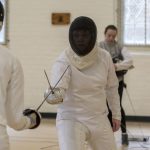
A bout starts with the fencers in the en-garde position, 4 metres (or 13.1 feet) apart. During a bout, the fencers move up and down a piste, or fencing strip. (Garrett Spahn '18 (CLAS)/UConn Photo)
Alpay
A bout starts with the fencers in the en-garde position, 4 metres (or 13.1 feet) apart. During a bout, the fencers move up and down a piste, or fencing strip. (Garrett Spahn '18 (CLAS)/UConn Photo)
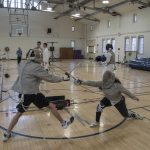
Hits are made with the point. The target area varies according to the type of fencing. Fencing is a sport that requires both physical and mental skill, and lightning-quick reactions. (Garrett Spahn '18 (CLAS)/UConn Photo)
Alpay
Hits are made with the point. The target area varies according to the type of fencing. Fencing is a sport that requires both physical and mental skill, and lightning-quick reactions. (Garrett Spahn '18 (CLAS)/UConn Photo)

Electrical cords are connected to the fencer’s clothing, to the weapon, and to the scoring box. When a weapon touches an opponent with even a small amount of pressure, a circuit is created and the scoring box lights up to reflect a hit. The fencer with the highest score in a bout of a predetermined duration wins. (Garrett Spahn '18 (CLAS)/UConn Photo)
Alpay
Electrical cords are connected to the fencer’s clothing, to the weapon, and to the scoring box. When a weapon touches an opponent with even a small amount of pressure, a circuit is created and the scoring box lights up to reflect a hit. The fencer with the highest score in a bout of a predetermined duration wins. (Garrett Spahn '18 (CLAS)/UConn Photo)
